He's gotta lotta rock...
We are no longer building saddle trees, but we have two videos about how Western saddles fit horses available on our westernsaddlefit.com website.
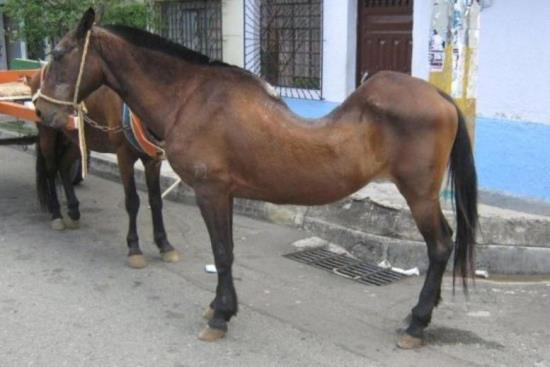
Following a previous post about the “rock line” and the topline not matching, I thought I would talk more about rock. Something we have learned more about by using the Dennis Lane cards is the amount of variation in rock between horses. We have also discovered that there are at least four reasons for lots of rock in the back, other than severe pathology as in the picture of this poor horse. (I have seen another couple of pictures of horses as extreme as this, and we saw one about half this bad while driving down to Sheridan one year. I wish we had stopped to take a picture.) Anyway, here’s what we know (or think we know) at the present time.

A definition to start with: Rock is the curve from front to back, both on the bottom of the bar
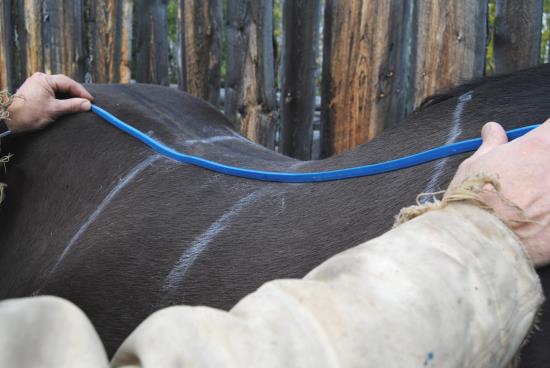
and along the horse’s back. The same definition works for both the horse and the tree since the two are supposed to fit each other. It takes a while to train your eye to see along the area under the bar, but it is the “rock line” that is important in saddle fit. Teaching yourself to concentrate on that part of the back rather than the top line is imperative, since the rock line and the top line are two different things.
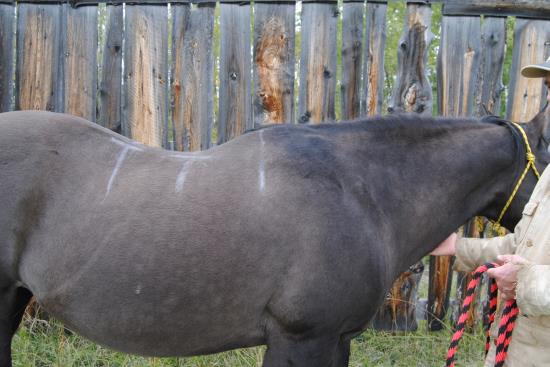
Note: When evaluating rock, it is always important for the horse to have his head forward and in his “normal working position”. Head position really affects rock in the back.
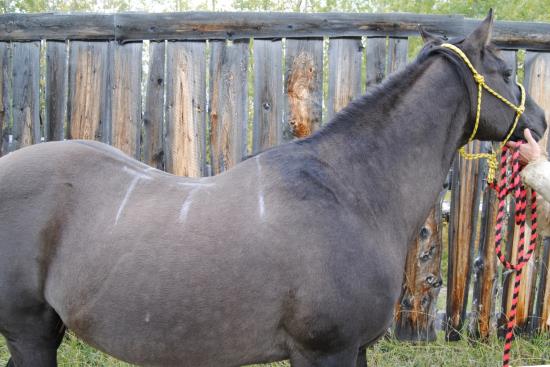
A raised head will increase rock.
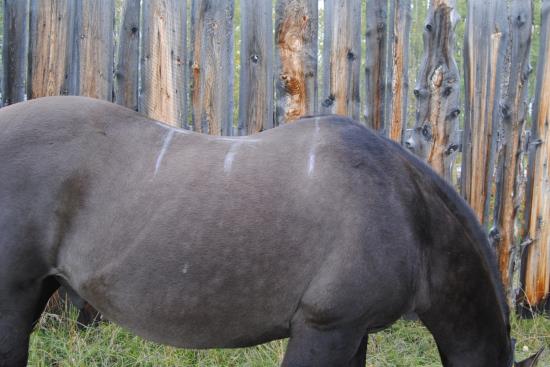
A head down while the horse grazes or eats his grain from a tub will flatten the back by lifting it in the middle.

Horses with their heads turned to the side also curve their body to varying extents, increasing the rock on the side they turn to and decreasing it on the other side.
These pictures show some of the variation in rock that occurs as the horse moves. Our goal as tree makers is to fit the “middle of the road” rock so while the tree bridges sometimes and has too much rock some times, those times even out so that we fit “the average”. We also have to make sure we build trees that don't Poke at any of these stages.

Reason #1 - A sagging spine
The first reason a horse can have a lot of rock in his back is because his back – the spinal column itself – actually sags more than it used to or than it should. “The old grey mare, she ain’t what she used to be…” Basically, this occurs when the horse’s muscles, especially the abdominal muscles, are weak and they get that pot bellied/saggy back look to them. (We see a lot of this in people too, but that isn’t anywhere I want to go at the moment…) The extra curve extends pretty much along the whole length of the back in these horses. The sagging back can happen for a few reasons, but basically it results from the horse no longer being in really good shape.
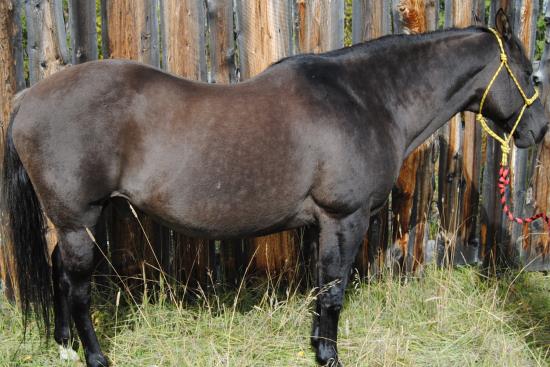
Age is a prime cause of this. As horses age, unless they are kept in really good shape by constant work, they tend to gain more rock in their back over time. This horse was well over 20 years old when this picture was taken.

Brood mares also often have more rock due to years of the extra weight of the foal pulling the abdomen down and causing the back to sag. (Gravity always works…)
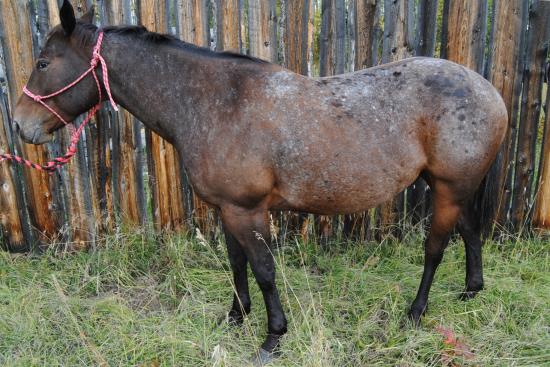
The third reason the spine sags is that the horse is just fat and out of shape. Their muscles are weaker and their abdomens are larger carrying the extra fat load, so they sag. In all these cases, but especially in the case of out of shape horses, the rock can actually decrease if they get in shape. The horse pictured here went from an R 12 to an R 9 when he was used consistently. (This picture doesn’t show him at his “saggiest”.)

Here he is after being in regular work for a few weeks. Besides changing the rock card that matched him, he also dropped a couple of card sizes at A when the fat over his withers was worked off.
This is a prime reason that if someone is going to go the route of carding their horse, they need to do it when he is in his “normal working shape” – whatever that happens to be. They do change a bit when they get working versus fat and out of shape versus “rode down” and a little too thin at the end of the season. A good tree will be able to span the normal variation of a horse’s weight – IF it is set at the midpoint of the range. If the tree is built for his “fat” stage, it probably won’t work really well for his “really skinny” stage. Whereas a tree built for his “good working shape” stage should still work OK, though not ideally, for his fatter and thinner stages.

Reason # 2 - Hollows behind the shoulder blades
The second reason that a horse has a lot of rock in his back is that he has hollows behind his shoulder blades. In these horses, the extra rock is primarily at the front end, as you can see in the picture above where the R12 card fits at the front end but lifts off a lot at the back. (Note: the card is being held incorrectly in this picture. It needs to be perpendicular to the horse, not the ground, to correctly check to see if the card matches the horse. I think they tipped it a bit for the picture.) The hollows are due to minimal muscling which allows the shoulders to stick out farther than they would if the horse had more muscle (or fat) in this area. Again, there can be a few different reasons for the hollows.

This can be because the horse is a thin bodied horse, and this is his basic conformation. It is exacerbated in a horse that is very difficult to keep weight on, as in the above example.

It can also be because the horse is of that narrower body type and has never built much muscle in the first place. This is a three year old warmblood who has never been ridden, but she has obvious hollows behind the shoulder blades.
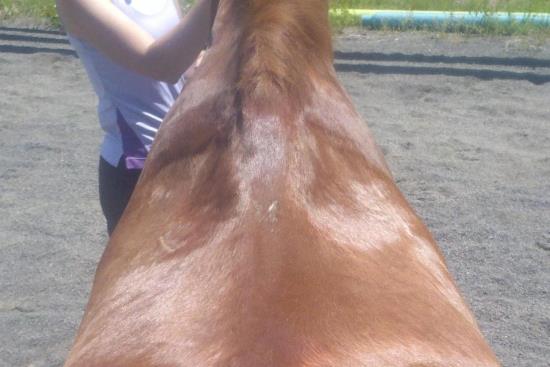
And a very common cause of these hollows is, unfortunately, muscle atrophy due to chronic high pressure from ill fitting saddles or from saddle being too far forward, up on the shoulder blades.
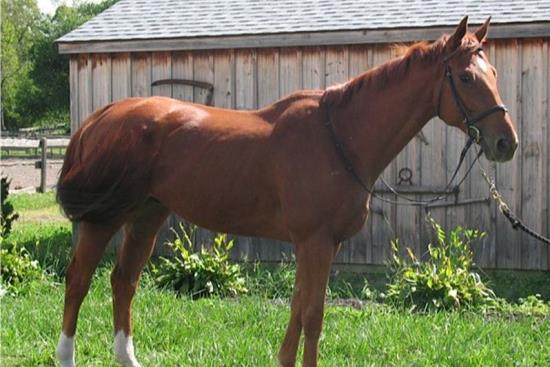
If you start looking at horses or pictures of horses on the internet you will see this everywhere. My biased view is that we see it more on horses primarily ridden in English saddles, but we see it in the western world too.
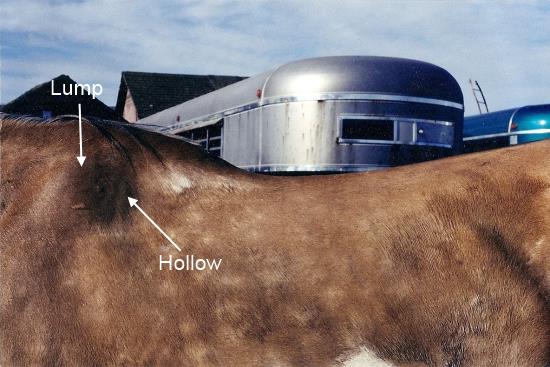
My working theory at the moment is that if the hollows are from bad saddling and it is truly atrophy, you will often see a lump at the back of the shoulder blade (either the damaged remains of normal muscle and/or scar tissue) and a hollow behind it.
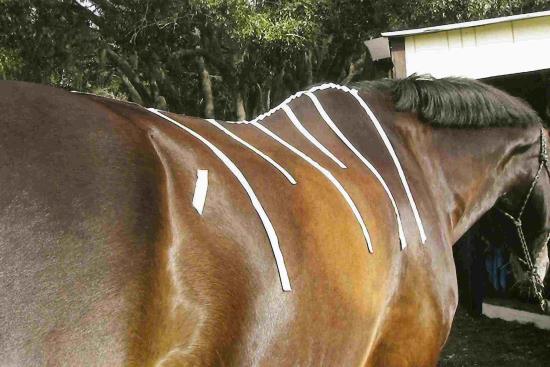
If it is due to poor muscle development (as in the Warmblood above) or because it is just that horse’s conformation (as in this case) you still have the hollows but the transition is smooth. We’ll see how true this idea is as we see more horses over time, but it is interesting to speculate…
In any case, having a big dip behind the shoulder blades means you need more curve (rock) in the front of the bar so you won’t interfere with the shoulders. (Some people call this “flare”, but there are a number of definitions of “flare” and we just find it better to avoid the term.) I will say however, that I doubt that a severely atrophied horse with the “mountain in front of the valley” conformation can ever really move freely. Whether they can be rehabbed or not depends on the severity of the damage, and it would take a lot of work, time and effort.
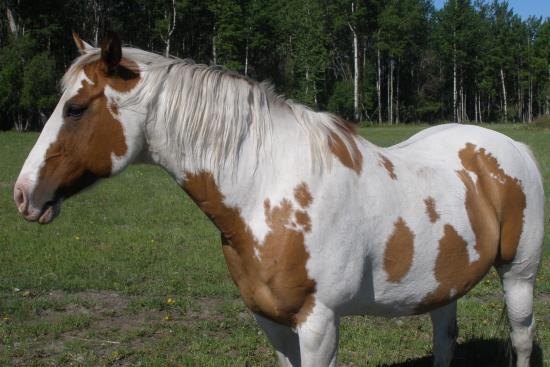
Reason #3 - Lots of muscle
Another body type of horses we see with lots of rock are at the opposite end of the spectrum – the really heavily muscled horses.

A lot of foundation type Quarter Horses and some of the arena performance horses fit into this category. So why would these horses have lots of rock?
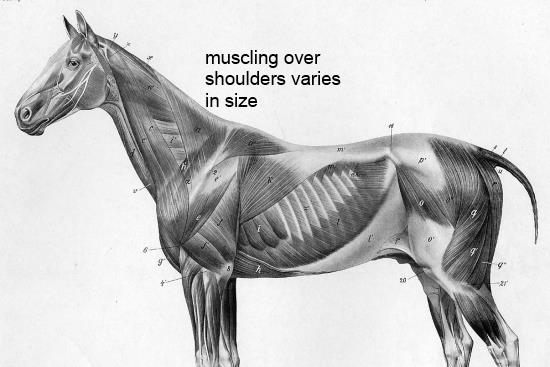
If you look at the musculature, there is a lot of muscle covering and right behind the shoulder blade.
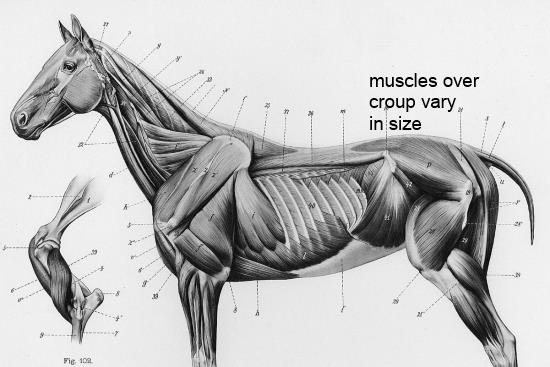
There are large muscles over the croup which extend forward over the loin too.
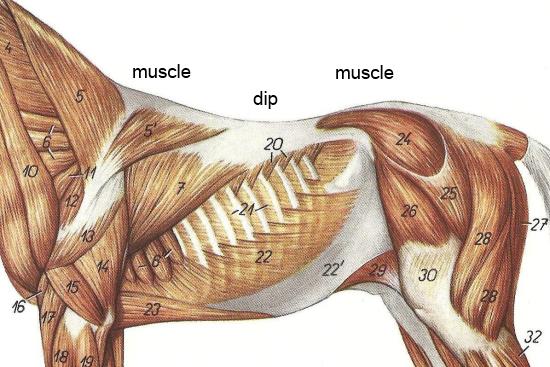
But there is an area between these where there are pretty much just the long back muscles. This means you have lumps of muscle fore and aft with a dip in between – and that means there is a lot of curve (rock) along the entire length of the back.
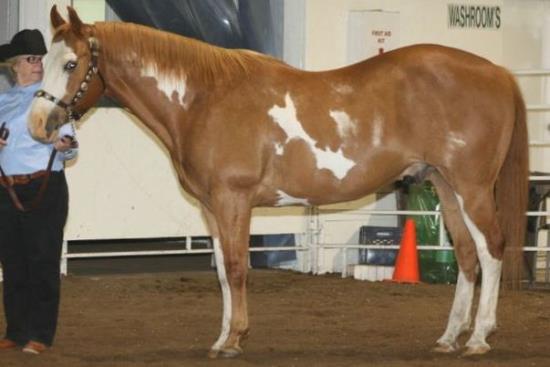
Reason #4 - Curve up toward the croup
The last group of horses we see with more than average rock are those with a lot of rise into the croup. We often see this associated with a croup high, or “downhill” horse.
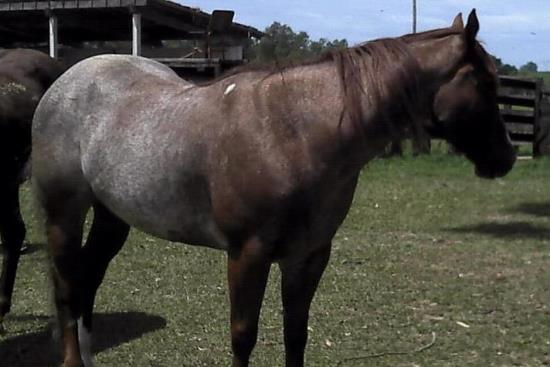
This is more common with our really muscular quarter horses than with thoroughbreds or with many European breeds whose backs are usually quite flat over the loin.
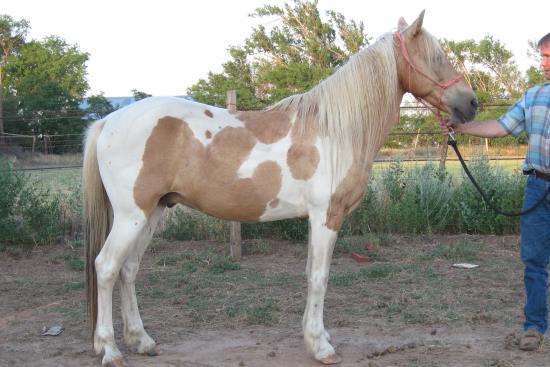
We also see this quite commonly in some smaller horses with short backs where the amount of curve in the back is compressed into a smaller length. This could be why rise into the croup is common in some types of Arabs, though not all.
Whether it is due to heavy muscles in the back end, a croup that is higher than the withers, or a short back, the result is the need to increase the curve at the back of the tree so the back bar tips don’t Poke into the loin.
Summing it all up
So when we evaluate a back for rock, we always look at the rock line - not the top line - since the two don’t correlate consistently. If there is a lot of rock, we look at where and why. Is it more at the front, the back, or along the entire length? The method we use to change the rock varies depending on where, front, back or overall, we have to increase it. Then we look at why. Is it due to a sagging back, hollow shoulders, big muscles, or rise into the croup? These factors usually correlate with body type and that will affect the other fitting specs for the tree. Things like - Does the horse have a really narrow or really broad conformation? That changes bar spread and angle. Does it have a really short back or is it croup high (downhill)? Then we have to consider total bar length.
The take home message is that you can’t just look at one of the factors that affect fit in isolation. They all work together. But there are also patterns where similar factors tend to consistently clump up together, and those patterns are what we, and others, call “body types”…
